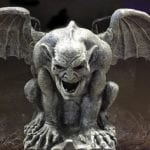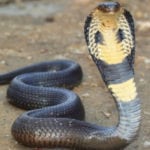 Weird Stuff
Weird Stuff  Weird Stuff
Weird Stuff  Our World
Our World 10 Ways Your Christmas Tree Is More Lit Than You Think
 Movies and TV
Movies and TV The 10 Coolest Stars to Set Sail on The Love Boat
 History
History 10 Things You Didn’t Know About the American National Anthem
 Technology
Technology Top 10 Everyday Tech Buzzwords That Hide a Darker Past
 Humans
Humans 10 Everyday Human Behaviors That Are Actually Survival Instincts
 Animals
Animals 10 Animals That Humiliated and Harmed Historical Leaders
 History
History 10 Most Influential Protests in Modern History
 Creepy
Creepy 10 More Representations of Death from Myth, Legend, and Folktale
 Technology
Technology 10 Scientific Breakthroughs of 2025 That’ll Change Everything
 Weird Stuff
Weird Stuff Ten Bizarre Facts About The Doge Meme
 Our World
Our World 10 Ways Your Christmas Tree Is More Lit Than You Think
 Movies and TV
Movies and TV The 10 Coolest Stars to Set Sail on The Love Boat
Who's Behind Listverse?

Jamie Frater
Head Editor
Jamie founded Listverse due to an insatiable desire to share fascinating, obscure, and bizarre facts. He has been a guest speaker on numerous national radio and television stations and is a five time published author.
More About Us History
History 10 Things You Didn’t Know About the American National Anthem
 Technology
Technology Top 10 Everyday Tech Buzzwords That Hide a Darker Past
 Humans
Humans 10 Everyday Human Behaviors That Are Actually Survival Instincts
 Animals
Animals 10 Animals That Humiliated and Harmed Historical Leaders
 History
History 10 Most Influential Protests in Modern History
 Creepy
Creepy 10 More Representations of Death from Myth, Legend, and Folktale
 Technology
Technology 10 Scientific Breakthroughs of 2025 That’ll Change Everything
10 Mythical Creatures That Are Real
Stories of mythical creatures are never in short supply. According to common folklore, most have ridiculous features and characteristics that may make it impossible to believe in their existence. The fact that we often lack verifiable evidence to prove they are real does not make their situation any better.
However, as we are about to find out, many of these supposedly mythical creatures actually existed and some are still around today. Now, you may be thinking, if they are really around, why do we not have pictures? We actually do. It is just that we mistake them for some other creature.
10 Real People Who Died Searching For Mythical Places
10 Mermaids

Tales of mermaids, a race of half-human and half-fish hybrids that live in the ocean are a common sailor’s tale.
Surprisingly, many of those stories are actually real even though they may be exaggerated. Mermaids exist. Christopher Columbus even spotted three during his first trip to America. He described them as “not so beautiful as they are said to be, for their faces had some masculine traits”.
Wait, what? Masculine? But mermaids are almost always female, aren’t they?
Well, the creatures we call mermaids are actually manatees and their closely related cousins, dugongs. Both animals are called sea cows because of their huge size. They are the largest aquatic herbivores in the world. Sailors mistook them for mermaids because of their unique human and fish-like characteristics.
A fully-grown sea cow is about six feet long, which is around the height of an adult human. They have five human finger-like bones on their flippers and can turn their necks and stand in shallow waters like a human. Put in their fish-like rears that sometimes stick out of the water and you have a mermaid.
9 Kraken
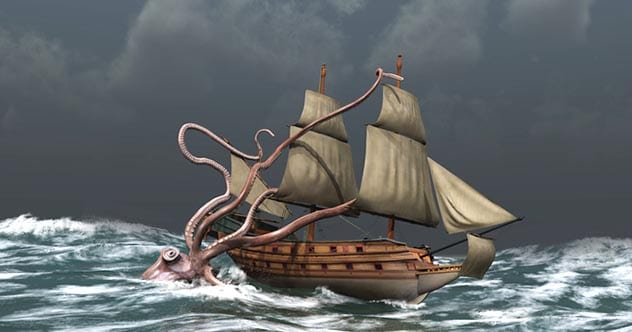
The kraken is probably the most fearsome sea monster ever imagined. According to sailors of old, it is a huge, octopus-like creature with a fondness for sinking ships and eating its crew. Legend says the kraken attacked and sank ships with its strong arms. If it was unsuccessful, it started swimming in circles until it created a whirlpool that sunk the ship.
Is the kraken real? Yes, it is.
The so-called kraken is actually the giant squid, which is huge (as the “giant” in the name already hints) but considerably smaller and less violent than sailors claimed. There are no accounts that it ever attacked or sank a ship or is even powerful enough to sink one.
The kraken moved from folklore to reality when the remains of a giant squid was found on a shore in Denmark in 1853. Curiously, the giant squid is as elusive as the legend it inspired. It lives so deep underwater that we have limited information about it.
However, we know it has the largest eyes of all living creatures, grows up to 18 meters and is frequently hunted by sperm whales for food. The weaker giant squid generally flees when confronted by a whale. However, it sometimes fights back when cornered and it is not unusual to find sperm whales with scars left from their battles with giant squids.
8 Dragons

Dragons are probably the most common mythical creatures out there. Their looks vary but the most common descriptions indicate they had reptile-like bodies, bat-like wings and sharp claws. Lest we forget, they also breathed fire out of their mouths.
Why do dragons have such varied description and why do many unrelated cultures attest to their existence?
It is because the real dragons had varied looks and lived in different parts of the world. Long after they were gone, their remains turned into fossils, which natives found and used to describe what they looked like. Some were huge and others were not. Some had sharp claws, some had bat-like wings and some may have had reptile-like bodies. However, none breathed fire from their mouths.
Lastly, we do not call them dragons but dinosaurs. Yes, dinosaurs are the origin of the dragon myth. Many cultures, particularly ancient China where tales of dragons abound, came up with dragons after finding fossils of dinosaurs.
7 Pouakai
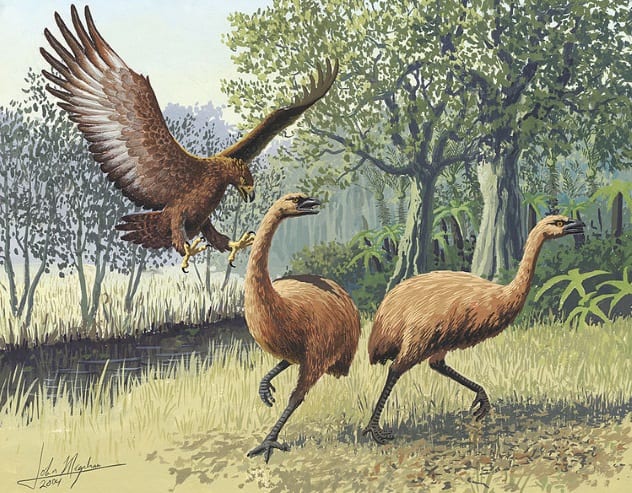
Maori folklore tells of the existence of a giant flying bird with a fondness for snatching humans off the ground and carrying them away for consumption. They called the bird pouakai, which means “old glutton” in English. As Frederick Richardson Fuller, a taxidermist at Canterbury museum later found out in 1871, that bird really existed.
The haast eagle, as it is now known, was the largest eagle to ever roam the earth. Its wings alone reached three meters and its primary prey was the larger (and extinct) moa bird, which weighed between 100 and 250 kilograms. We humans weigh considerably less, so the bird may have really hunted us.
The haast eagle and moa evolved independently of humans. This means the eagle may have confused the first humans to land on New Zealand with the moa since the humans probably wore clothes made out of feathers. On the other hand, it may not have cared at all and just added us to the menu.
6 Roc
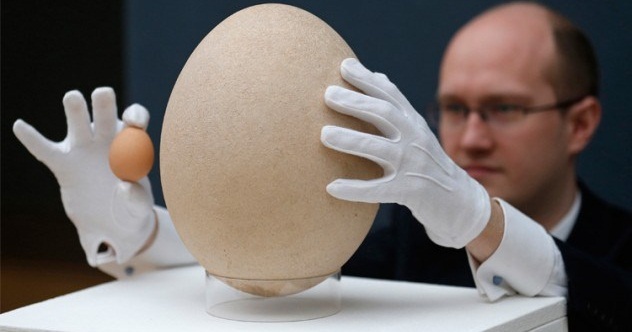
If you thought the haast eagle was deadly, the roc is worse. It is a haast eagle on steroids. If a haast eagle could pick up a human, a roc would pick up a community. No one said it did but we are just trying to provide some perspective. However, there are claims the roc could lift a fully-grown elephant off the ground.
Sailors of old claimed the roc lived on an island just off the coast of Africa. In reality, the supposed roc is actually the aepyornis aka the elephant bird. It weighed half a ton and grew up to 10 feet, making it the largest bird to ever exist. Like the roc, it lived on Madagascar, an island just off the coast of Africa.
However, the aepyornis could not lift an elephant into the sky because it was flightless. Besides, there are no elephants in Madagascar and the bird, despite its huge size, is much smaller than an elephant. The elephant bird existed at the time rumors of the roc first appeared 900 years ago but went extinct in the 1500s. Humans may have hunted it into extinction.
10 Real-Life Inspirations For Mythical Things
5 Unicorns
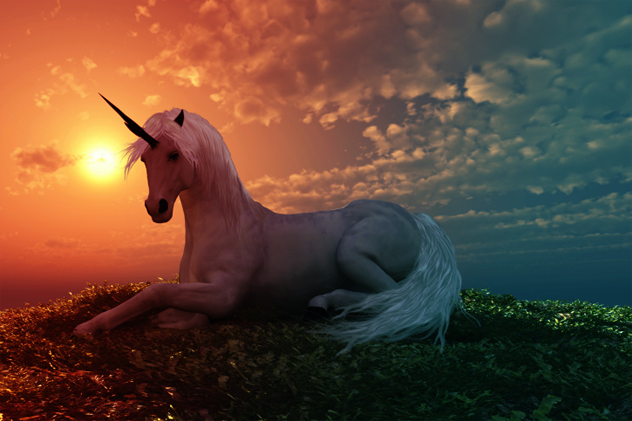
The unicorn is a mythical horse with a single horn in the middle of its head. Are they real? Yes, they were but they were not what you think.
Unicorns were not horses but rhinoceroses, that is, if the extinct Siberian unicorn is really the origin of the unicorn myth. Like the unicorn it may have inspired, the Siberian unicorn walked on four legs and had a huge horn in the middle of its head.
However, unlike the unicorn, the rhino was bigger, stronger and probably meaner. For perspective, it weighed four tons. You would not want to be around that thing.
The Siberian unicorn lived in Eurasia until it went extinct around 39,000 years ago. Fortunately for the humans that were around at the time, it was a herbivore and preferred munching down on shrubs. However, like today’s rhinos, it may have been very aggressive towards unlucky humans that strayed too close.
4 Griffins
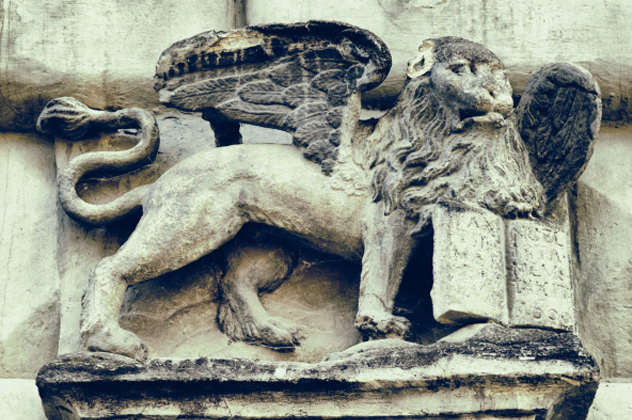
The griffin is another hybrid mythical creature. According to myth, they have the faces, wings and front legs of an eagle and the rear, tail and hind legs of a lion. They flew too, which makes them one creature early humans would have given a wide berth, if they existed that is.
Talking of existence, griffins really existed but that was before the first humans appeared. They were actually a kind of dinosaur called the protoceratops. Like the griffin, the protoceratops walked on four legs and had a beak but did not have a wing.
But at a time when people had little knowledge of dinosaurs and only birds were believed to have beaks, it is no surprise that people claimed it had wings. Whatever had a beak should have a wing, shouldn’t it? Besides, the creature had long shoulder blades that were easily mistaken for wings.
3 Sea serpent
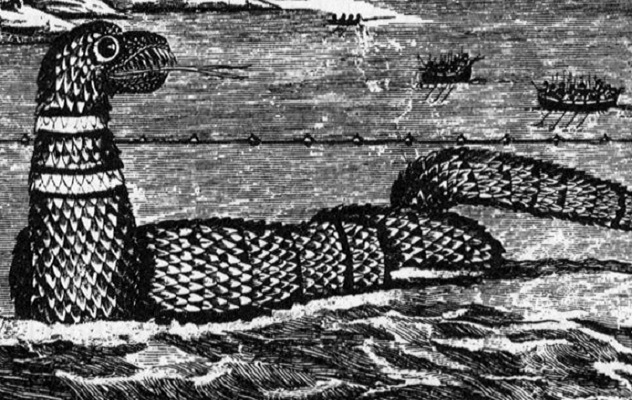
The sea serpent is another ferocious creature believed to patrol the ocean. Seafarers of old told elaborate stories of its existence so much that it became folklore. The creature, as you may have guessed from its name, is a supposedly monstrous fish-snake hybrid. Like the kraken, the sea serpent really exists even though its features and stories are heavily exaggerated.
For a start, the supposed sea serpent is actually an oarfish, which really looks like a fish-snake hybrid. But that is where their similarities end. The oarfish is much smaller even though it is considerably long for a fish. It reaches up to 30 feet in length, making it the longest bony fish in existence.
Unfortunately, we know little about the oarfish because it lives deep underwater. However, we know it neither feeds on humans nor fishes but on small marine creatures like crustaceans and krill. It was officially discovered in 1772, centuries after the legend it inspired first appeared.
2 Yeti
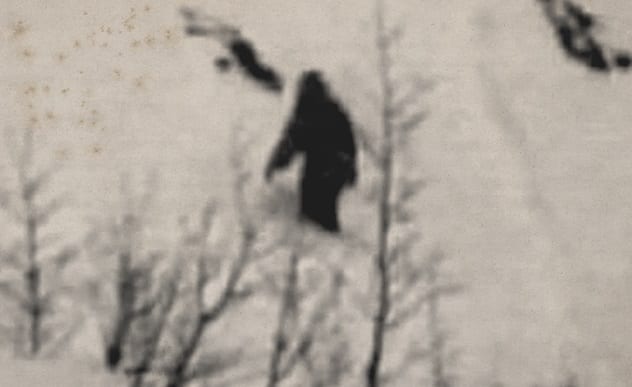
The Himalaya people of Nepal and China have traditionally talked about the existence of a big and hairy six-foot tall creature they call the Yeti. The existence of this mythical and elusive creature only became widespread knowledge in 1921 when some British explorers claimed to have found its footprints while climbing the Everest.
The explorers said their local guides called them “metoh-kangmi” (“man-bear snow-man”). However, Henry Newman, the journalist who interviewed the group, mistranslated “metoh” as “filthy” instead of “man-bear”. He later changed filthy to abominable because it sounded better. That was how the Yeti got its more common name, the Abominable snowman.
The name, the Abominable snowman, may make you mistake the Yeti for a race of undiscovered and uncivilized humans. However, if we went back to its correct Himalaya name, the “man-bear snow-man”, we would quickly realize we are dealing with a human-sized bear that lives in the snowy region.
The Yeti is actually the Himalayan brown and black bears, two real subspecies of bears that live in the Himalayas. Like the Yeti, both bears are big, hairy and brown (or black in the case of the black bear). DNA tests have proven that most of the hair, skin, teeth, fur and feces that supposedly belong to the Yeti actually belong to these bears.
1 Gorillai
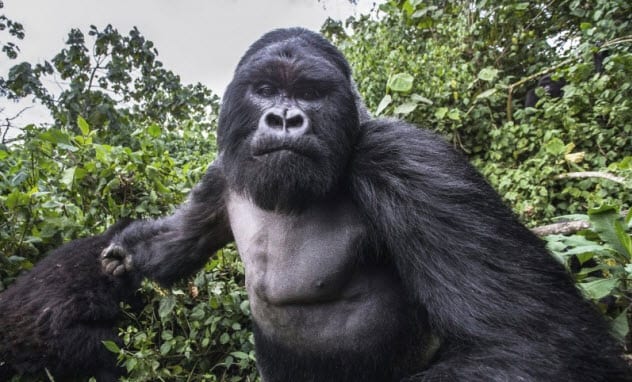
Sometime between the 5th and 6th centuries B.C., an explorer from ancient Carthage called Hanno the Navigator discovered a tribe of hairy and “rude people” while navigating the coasts of West Africa. In his reports, Hanno wrote that the tribe had more males than females who he referred to as “hairy women” and called gorillai.
Hanno’s party chased the tribe but they all fled. The males were considerably faster and quickly climbed the cliffs from where they threw stones at his team. The females were slower and his team managed to capture three. However, they fought back aggressively, forcing Hanno and his men to kill and skin them. He took their skins back to Carthage.
The creatures became folklore since no westerner saw them again until an American missionary called T.S. Savage, rediscovered them in 1847. They were not humans but apes. Or to be more precise, they are the apes we now call gorillas. Savage named the new creatures “Troglodytes gorilla” in keeping with Hanno’s gorillai.
To be clear, there is some debate over whether Hanno saw gorillas or some other species of apes. Nonetheless, Savage’s “Troglodytes gorilla” was later renamed “Gorilla gorilla” while the animal itself was called gorilla.
10 Myths Humans Have Used To Explain Natural Disasters
